One of the themes of our current exhibition In a Different Light: Winslow Homer & Frederic Remington, is the exploration of both artists’ practice of repeating character types throughout their career. The exhibit includes a rotation of works on paper by Homer. One of the rotations features two works inspired by Homer’s visit to Cullercoats, England – Perils of the Sea (1888) and Scotch Mist (1883). Examination of the two artworks reveals Homer’s practice of reusing groupings of figures while reducing compositions to their essential story-telling elements.
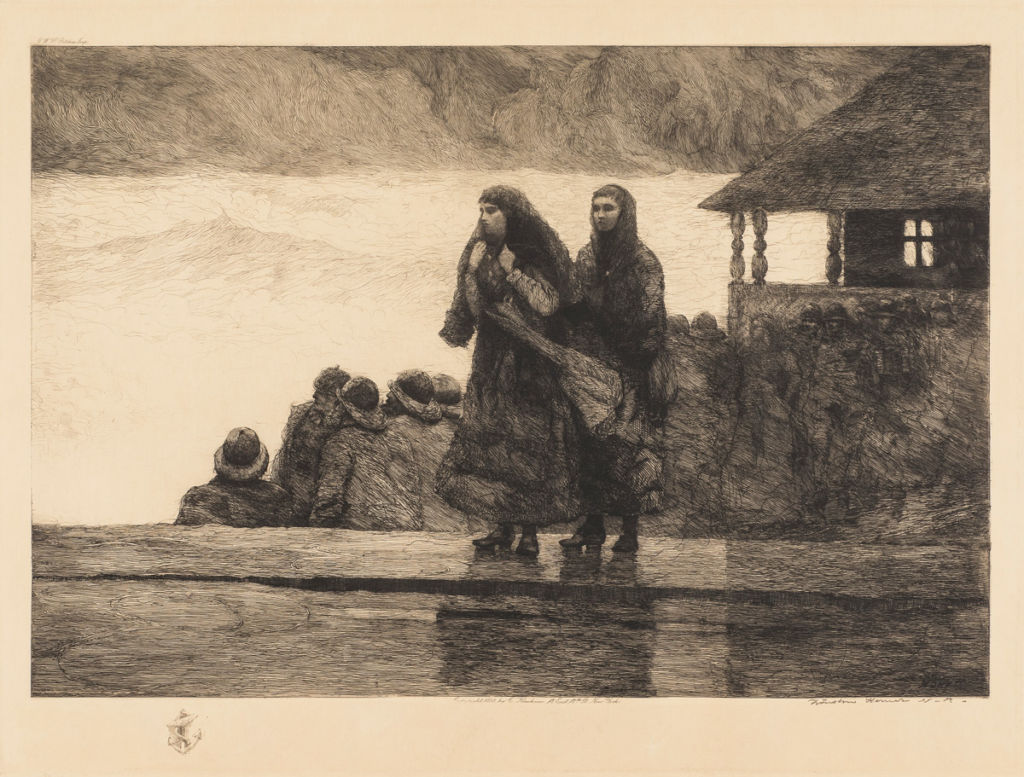
Perils of the Sea | Winslow Homer | 1888 | Etching | Amon Carter Museum of American Art | 1983.58
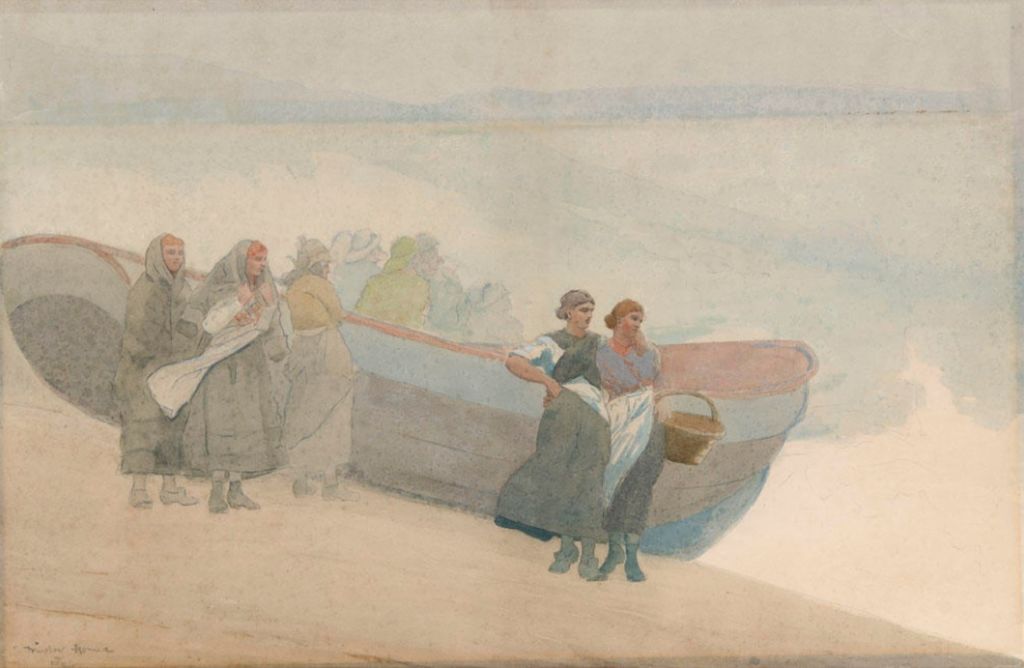
Scotch Mist | Winslow Homer (1836-1910) | 1883 | Watercolor and graphite on paper | McNay Art Museum | 1950.67
By the summer of 1883, Homer had settled into reworking compositions wherein he continued to experiment with figural pairs on the lookout, nervously waiting for the news or some sign of hope as they await the return of the fishermen in stormy weather. The artworks executed around the time he worked in Cullercoats (1881-1882) are more traditional in style as he explored new themes and recycled figures for new narratives in his work.
In Scotch Mist, we see Homer revising and adapting figure groupings from other compositions. The figure pair at the left and fishermen in the background have been adapted from Homer’s 1881 watercolor Perils of the Sea. To the right of the boat we see the two women featured in Homer’s 1882 drawing Blyth Sands.
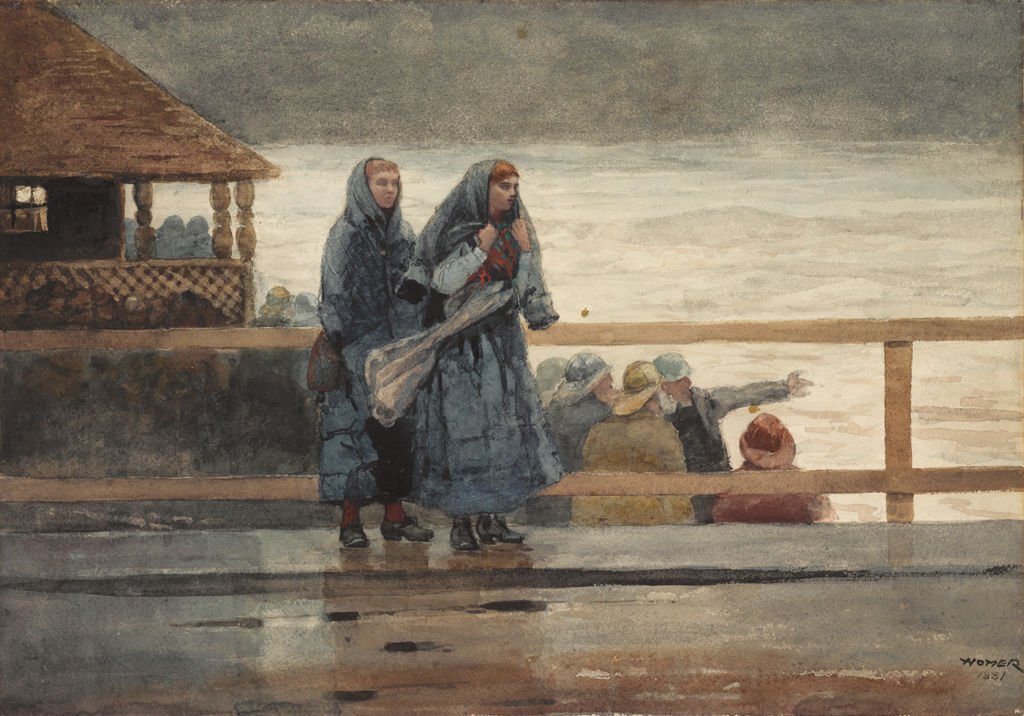
Perils of the Sea | Winslow Homer (1836-1910) | 1881 | Watercolor over graphite on cream wove paper | The Clark | 1955.774

Blyth Sands | Winslow Homer | 1882 | Graphite, opaque watercolor, ink, chalk, and charcoal on paper | Amon Carter Museum of American Art, Fort Worth, Texas | 1982.58
In the 1888 etching of Perils of the Sea, Homer returns to a watercolor composition he created seven years earlier in Cullercoats also titled Perils of the Sea. The title derives from the refrain of a contemporary Anglican hymn “Eternal Father, Strong to Save,” whose lyrics written by Englishman William Whiting in 1860 read, “O hear us when we cry to Thee/for those in peril on the sea.”
The image, dominated by the white expanse of ocean waves in the distance implies the dependence and dangers of the people of Cullercoats on the sea. Both the title and the figures’ faces indicate danger just offshore. Everyone is gathered near the brigade house, a staple of Cullercoats that remained in use as a lifeboat station until 2003. In both the print and the original watercolor, Homer focuses on the two women as they watch in anxious uncertainty for the safe return of loved ones.

Cullercoats Life Brigade House, photo by Andrew Curtis; now houses a community centre and exhibition space
While Homer translated Perils of the Sea from watercolor to etching, the artist did not simply reproduce the image. He has not only allowed the natural reversal of the printing process, but Homer has altered the details as well. He has eliminated the railing behind the women. Additionally, he has removed the pointing arm of one of the fishermen below. Along with deepened shadows, the resulting print is a stronger diagonal composition, which further emphasizes the separation of the figures on land from the sea.
This reworking of figure groupings can also be seen in the works of Frederic Remington. Take a look at his 1902 bronze Coming Through the Rye. This boisterous group of cowboys in drunken revelry is one of Remington’s most popular sculptures. First conceived as an illustration in 1888, and then reworked as Cow-Boys Coming to Town for Christmas in 1889, it is classic reuse of the character types Remington returned to again and again.
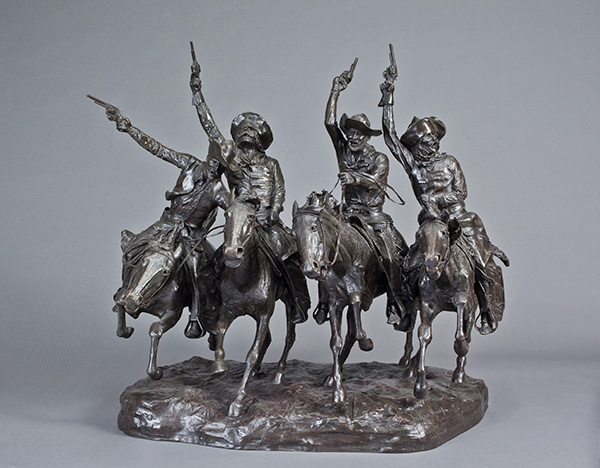
Coming Through the Rye | Frederic Remington (1861-1909) | Copyrighted October 8, 1902 | Roman Bronze Works cast #1, 1902 | Private Collection
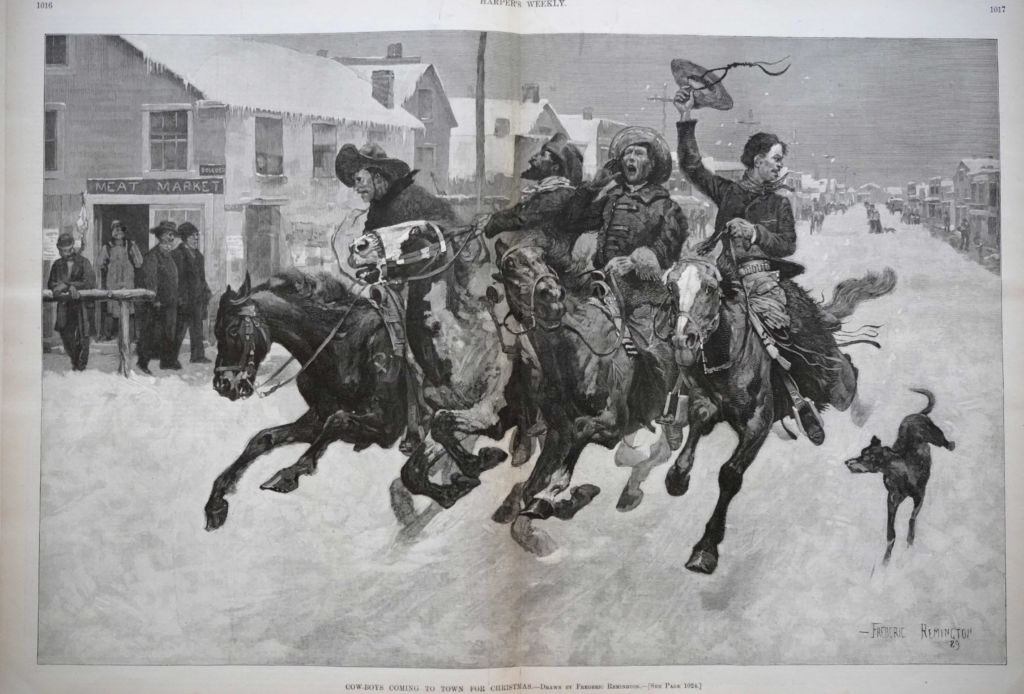
“Cow-Boys Coming to Town for Christmas” | Frederic Remington (1861-1909) | 1889 | Wood Block and Magazine Print | Sid Richardson Museum | 2001.1.1.139
Likewise, take a look at Remington’s 1903 painting His First Lesson from the Amon Carter Museum of American Art. The artist shows two cowboys breaking a pony to a hackamore and saddle while bystanders look on. Interestingly, the two figures at work with the horse are identical, as if they are the same figure repeated twice in the composition. Remington so often recycled character types in new compositions, that here it seems he has repeated himself in the same painting.
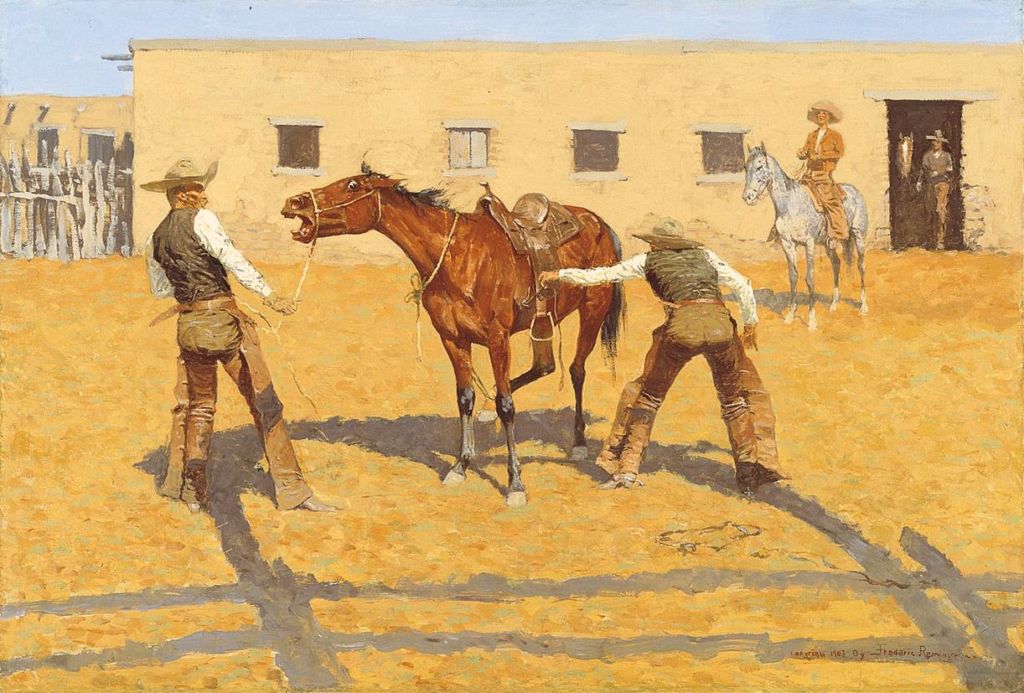
His First Lesson | Frederic Remington (1861-1909) | 1903 | Oil on canvas | Amon Carter Museum of American Art | 1961.231



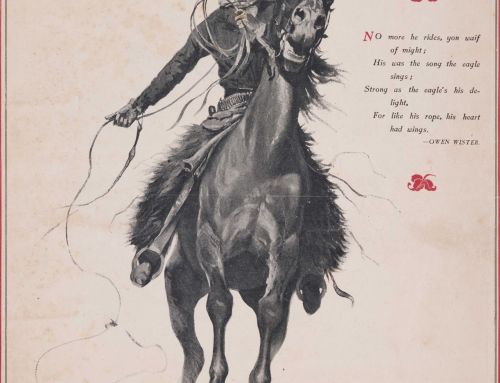
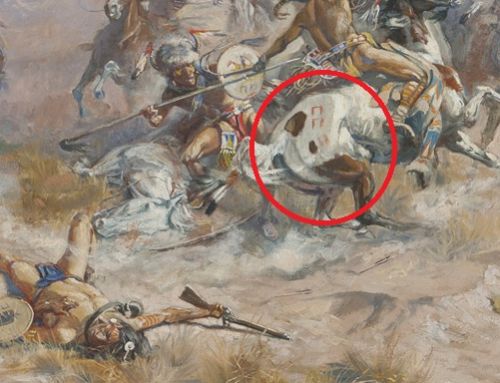
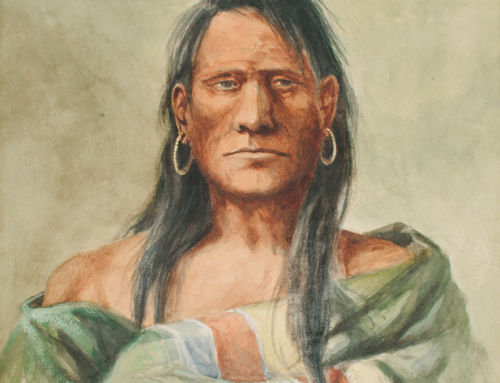
[…] sea. Some artworks may include women looking anxiously out at sea, as in his 1888 etching Perils of the Sea, available to view through our virtual tour. Some artworks include scenes of near-drowned women, as […]